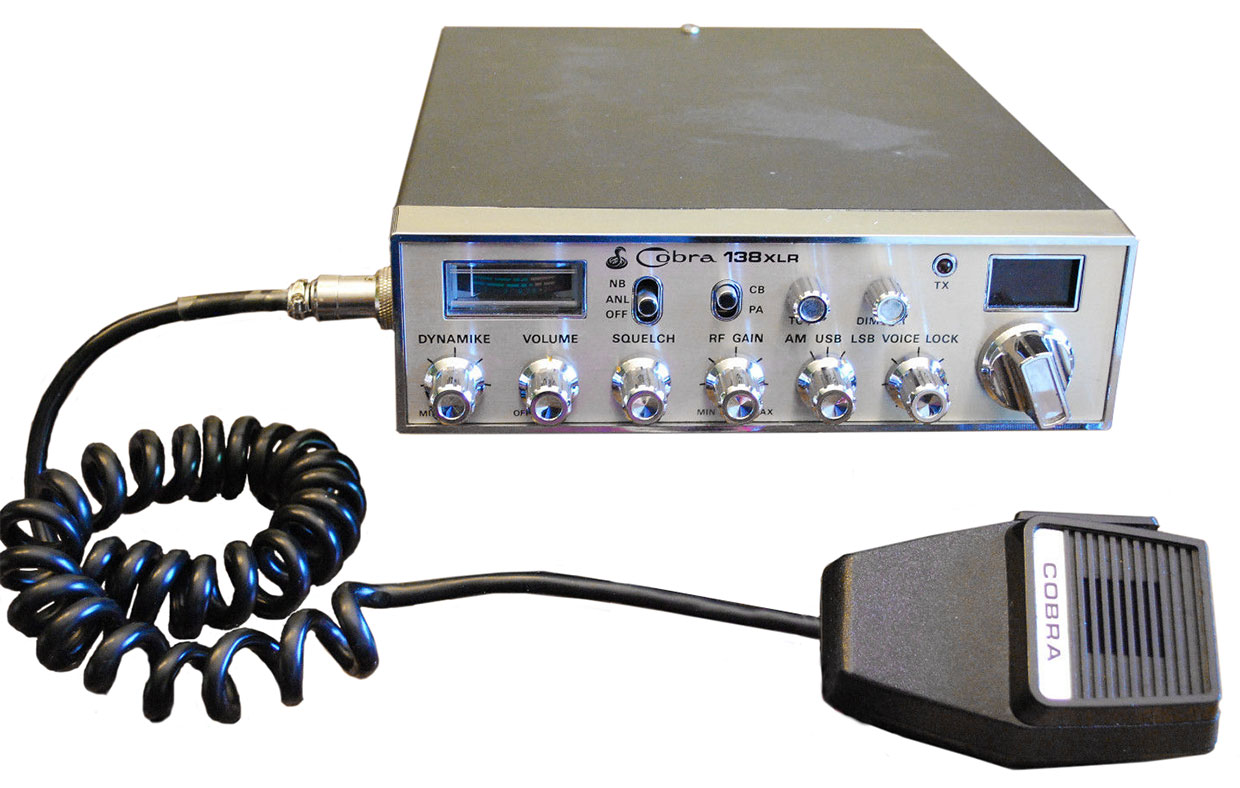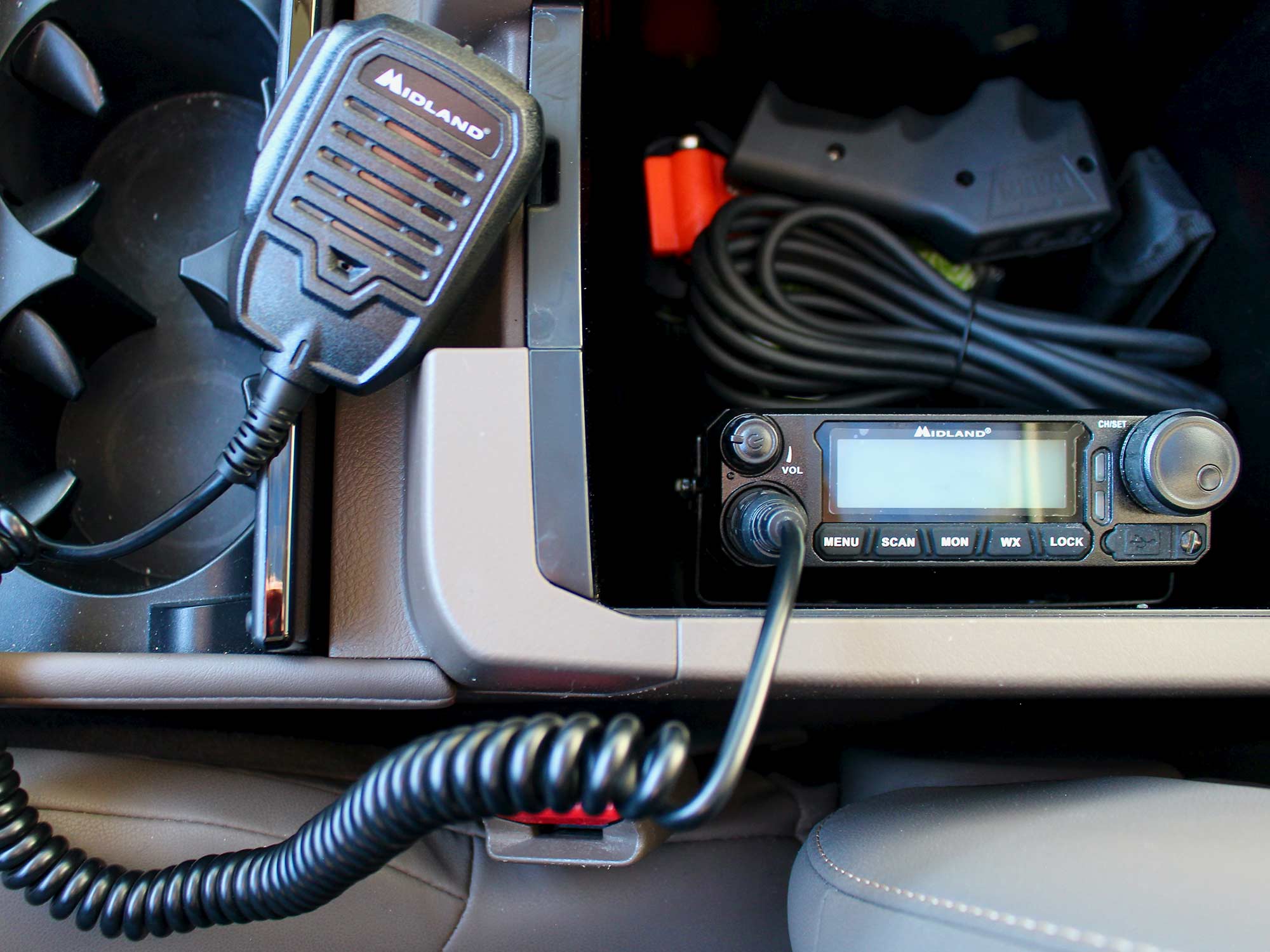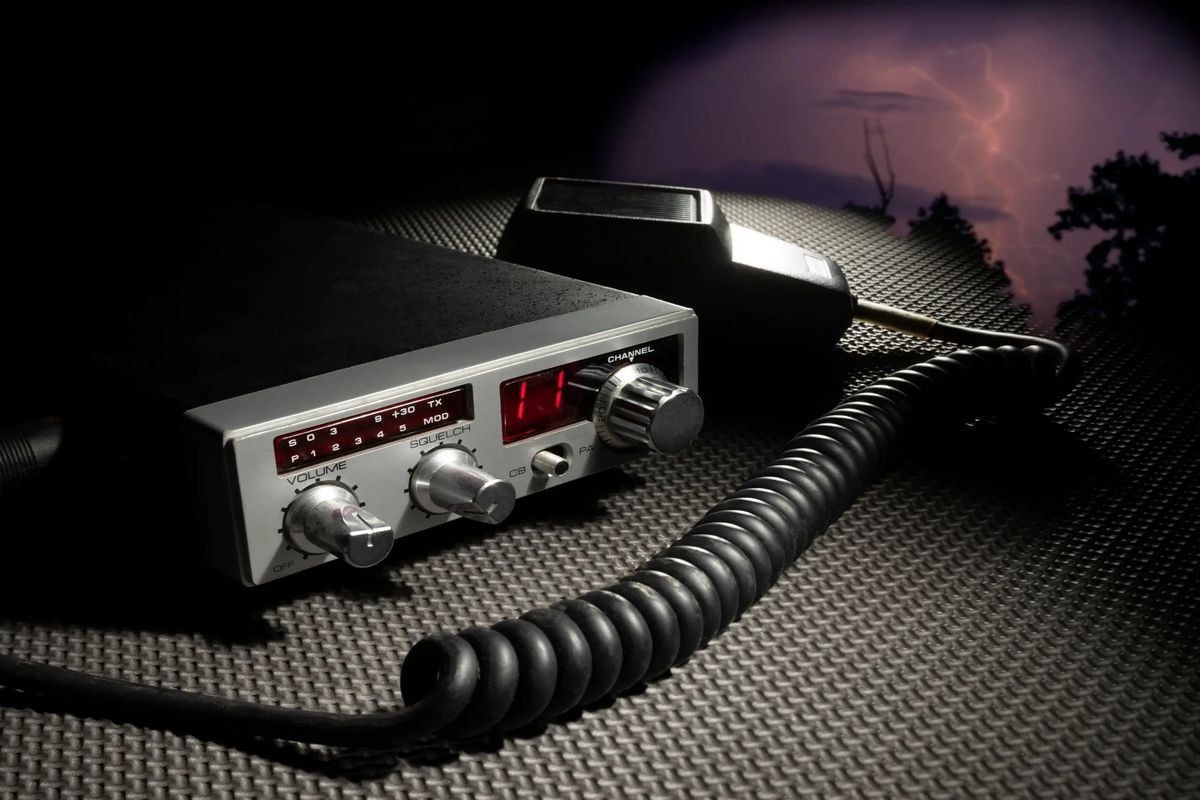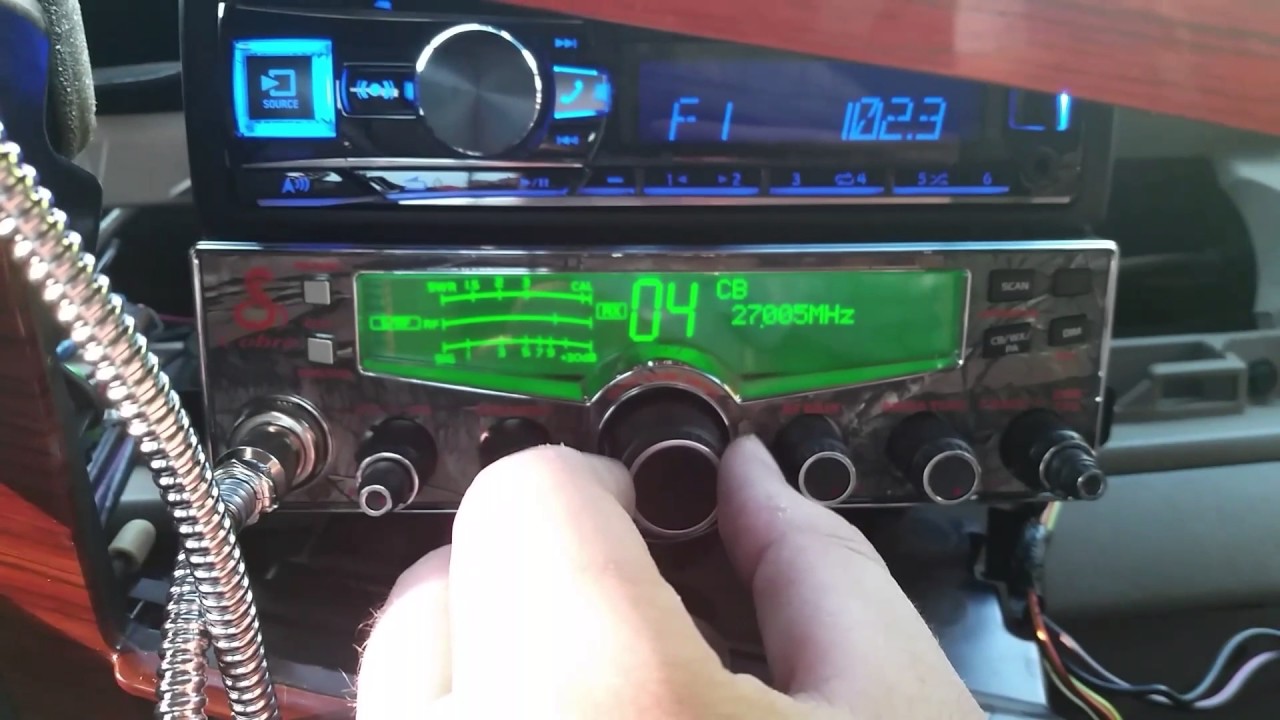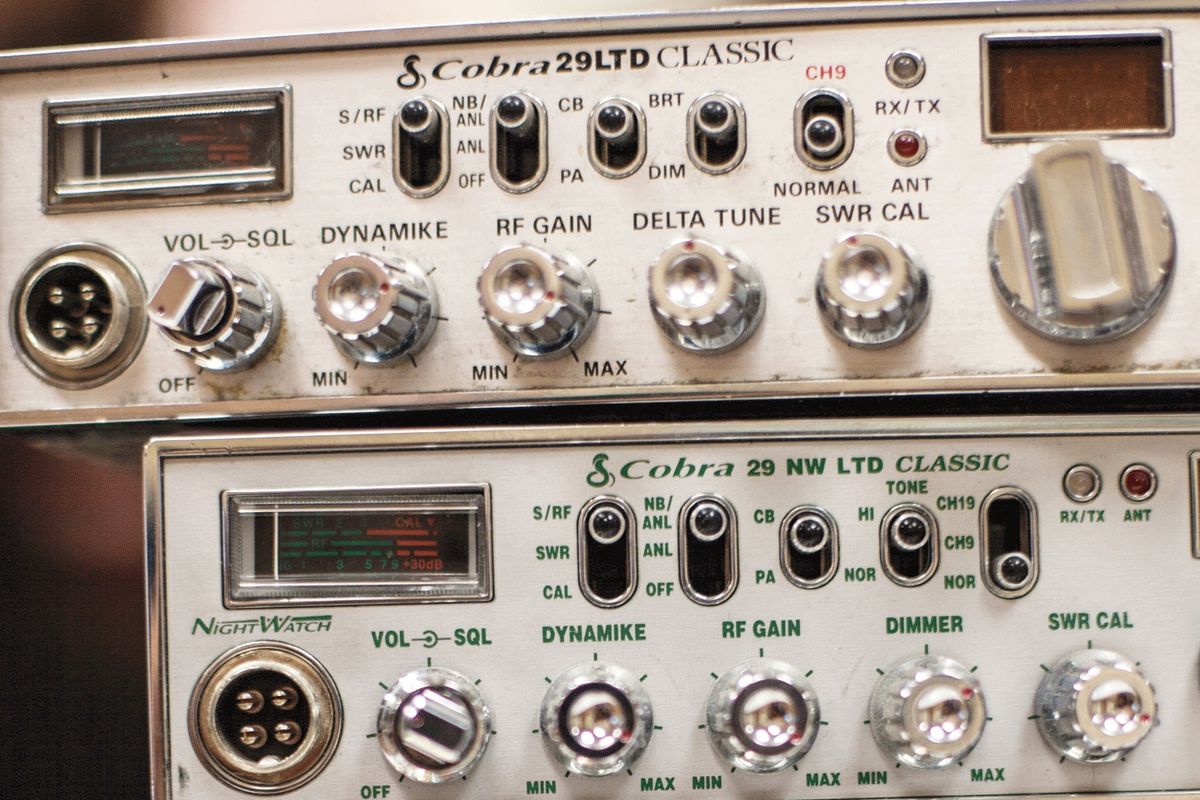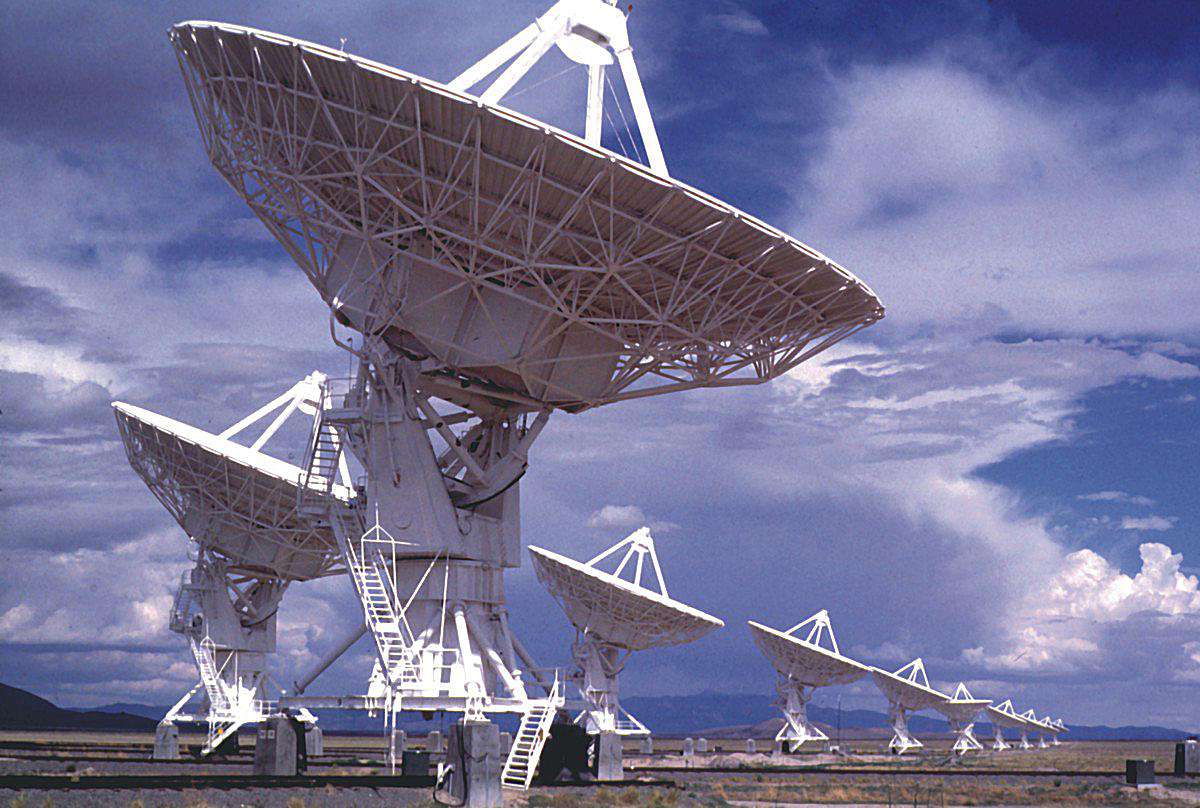Home>Devices & Equipment>Radio>What Frequency Does CB Radio Use


Radio
What Frequency Does CB Radio Use
Modified: January 22, 2024
Discover the frequency used by CB radio and gain valuable insights into the world of radio communication. Unveil the secrets of radio technology and enhance your knowledge today!
(Many of the links in this article redirect to a specific reviewed product. Your purchase of these products through affiliate links helps to generate commission for AudioLover.com, at no extra cost. Learn more)
Table of Contents
Introduction
Welcome to the world of CB radio! CB, which stands for Citizens Band, is a popular form of two-way radio communication that allows individuals to connect with one another over short distances. CB radios have been around for decades and continue to be used by truckers, hobbyists, and emergency organizations.
One of the key aspects of CB radio communication is understanding the frequencies involved. Each CB radio operates on a specific frequency, which determines the range and clarity of communication. In this article, we will explore the different frequencies used in CB radio and their significance.
Understanding CB radio frequencies is essential for anyone interested in using a CB radio. It not only ensures effective communication but also ensures compliance with regulations set by government authorities. By understanding the frequencies, you can make the most out of your CB radio experience.
So, let’s delve into the world of CB radio frequencies and explore the different aspects of this fascinating form of communication.
Understanding CB Radio Frequencies
CB radio frequencies refer to the specific range of radio wave frequencies that are utilized for CB radio communication. CB radios operate within the 27 MHz (Megahertz) bandwidth and are divided into specific channels. Each channel has its own designated frequency, which allows individuals to communicate on specific wavelengths.
CB radio frequencies are typically divided into 40 different channels, starting from channel 1 (26.965 MHz) and ending at channel 40 (27.405 MHz). These channels are standardized and widely adopted across different countries, ensuring compatibility and ease of communication.
Within the CB radio frequency range, there are specific channels that have been designated for specific purposes. For example, some channels are reserved for emergency communications, others for truckers, and some for general communication and chatter. Understanding the purpose of each channel is important in order to use CB radios effectively and ethically.
Furthermore, it is crucial to note that CB radio frequencies operate on the AM (Amplitude Modulation) mode. This mode of modulation allows for clear and reliable transmission of voice signals. AM modulation is well-suited for CB radios, as it ensures that the signal is intelligible even in noisy environments, making it ideal for use in vehicles or other noisy settings.
One key aspect to keep in mind is that the range of CB radio communication is limited. Generally, CB radios have a range of up to a few miles, depending on various factors like terrain, weather conditions, and the power output of the radio. It is important to manage your expectations and understand that CB radios are primarily designed for short-range communication.
In the next sections, we will explore the legal CB radio frequencies, commonly used frequencies, and the importance of specific channels within the CB radio frequency range. Understanding these details will help you make the most out of your CB radio communication and ensure compliance with regulatory guidelines.
Legal CB Radio Frequencies
CB radio frequencies are regulated by government authorities to ensure that radio communication remains orderly and interference-free. The legal frequencies for CB radios vary from country to country, so it’s important to familiarize yourself with the specific regulations in your region.
In the United States, the Federal Communications Commission (FCC) regulates CB radio frequencies. The FCC has designated 40 channels within the 27 MHz range for CB radio use. These channels are standardized across the country, allowing users to communicate with each other regardless of their location.
In Europe, the European Conference of Postal and Telecommunications Administrations (CEPT) has established a harmonized channel allocation plan for CB radios. This plan allocates 40 channels within the 27 MHz range, similar to the United States. However, there may be slight variations in frequencies and channel designations between European countries.
It’s important to note that while CB radios operate on specific frequencies, they are considered a public service and do not require a license to operate. This distinguishes them from other radio services, such as amateur radio, which typically require operators to obtain a license.
However, even though no license is required, it is still important to adhere to the regulations and guidelines set by the regulatory authorities. This includes using only the designated CB radio frequencies, avoiding excessive power output, and refraining from using any illegal modifications or enhancements that can interfere with the normal operation of CB radios.
By following the legal CB radio frequencies, you not only ensure compliance with the regulations but also contribute to a harmonious and interference-free radio environment for all users. It is important to be a responsible CB radio operator and utilize the frequencies responsibly and ethically.
Next, let’s explore the commonly used CB radio frequencies that you are likely to encounter during your CB radio adventures.
Commonly Used CB Radio Frequencies
While there are 40 channels available for CB radio communication, not all of them are used equally. Certain frequencies have become more popular and commonly used by CB radio enthusiasts for different purposes. Let’s explore some of the commonly used CB radio frequencies:
- Channel 19 (27.185 MHz): This channel is considered the “trucker channel” and is widely used by long-haul truck drivers to communicate with each other. It has become a hub for truckers to share information about road conditions, traffic, and other relevant updates.
- Channel 9 (27.065 MHz): Channel 9 holds a special significance in the CB radio community. Originally designated as the emergency channel, it is now primarily used for non-emergency communication and general chatter. However, it is important to keep Channel 9 clear and available for emergency situations.
- Channel 6 (27.025 MHz): This channel is commonly used by truckers and travelers for general communication. It is often utilized for casual conversations and exchanging information.
- Channel 4 (27.005 MHz): Another frequently used channel, Channel 4 is known for its proximity to the lower end of the CB radio frequency range. It is often utilized by truckers and travelers for communication and exchanging updates.
These are just a few examples of commonly used CB radio frequencies. Depending on your location, you may encounter different channels that are preferred by local CB radio enthusiasts.
It’s worth noting that while these frequencies may be commonly used, it’s important to respect others’ communication and not infringe upon ongoing conversations. Always be courteous and patient when using CB radio frequencies, especially channels that are known for their popularity.
Now that we’ve explored the commonly used frequencies, let’s discuss the importance of Channel 9 and its role in CB radio communication.
The Importance of Channel 9
Channel 9 holds a special place in the world of CB radio communication. Originally designated as the emergency channel, it serves as a vital means of communication during times of crisis. While it is no longer the exclusive channel for emergencies, it still plays a crucial role in ensuring the safety and security of CB radio users.
Channel 9 is globally recognized as the standard emergency channel for CB radio communication. In case of an emergency situation, such as accidents, breakdowns, or other urgent incidents, individuals can switch to Channel 9 to seek help or report the emergency to nearby CB radio users.
Switching to Channel 9 during emergencies allows you to connect with other CB radio users who might be nearby and able to provide assistance or relay your message to the appropriate authorities. It acts as a lifeline in situations where immediate communication and help are required.
However, it is important to note that Channel 9 is not solely reserved for emergencies. In recent years, the usage of Channel 9 has evolved, and it is now primarily used for non-emergency communication and general chatter. This shift is a result of the widespread availability of other emergency services and the need to keep channels clear for urgent situations.
Even though Channel 9 is no longer exclusively reserved for emergencies, it is crucial to treat it with respect and keep it available for emergency communication. As CB radio users, it is our responsibility to monitor Channel 9 and switch to a different channel for casual conversations, allowing emergency communications to take precedence when needed.
When using Channel 9, it’s important to be mindful of others and maintain proper radio etiquette. Avoid unnecessary interruptions, maintain clarity in your messages, and listen for any potential emergency calls that may come through.
By recognizing the importance of Channel 9 and using it responsibly, we contribute to a safer and more effective CB radio community. So, remember to keep Channel 9 in mind and prioritize the well-being and safety of others during your CB radio adventures.
Next, let’s explore the CB radio frequency range and the factors that can affect CB radio frequencies.
CB Radio Frequency Range
The CB radio frequency range refers to the specific range of frequencies within which CB radios operate. CB radios utilize the 27 MHz (Megahertz) bandwidth, which allows for effective short-range communication. This range is divided into 40 channels, with each channel having its own designated frequency.
The CB radio frequency range starts from 26.965 MHz (Channel 1) and extends up to 27.405 MHz (Channel 40). These frequencies are standardized and widely adopted across different countries, ensuring compatibility and ease of communication between CB radio users.
It’s important to note that the CB radio frequency range falls within the HF (High Frequency) band, which is known for its propagation characteristics. HF signals can travel relatively long distances by bouncing off the ionosphere, providing CB radios with a wider communication range than just line-of-sight transmission.
However, it’s crucial to understand that the range of CB radio communication is significantly limited compared to other radio services like amateur radio or commercial radio. Typically, CB radios have an effective range of up to a few miles, although various factors can impact the actual range.
The range of CB radios can be affected by factors such as terrain, weather conditions, antenna quality, and the power output of the radio. In areas with obstructed terrain like mountains or dense urban landscapes, the range may be reduced due to signal blockage or reflections.
Weather conditions can also impact CB radio performance. During periods of extreme atmospheric conditions, such as ionospheric disturbances or thunderstorms, signal propagation can be affected, leading to reduced range or increased interference.
Additionally, the quality and efficiency of the antenna used with a CB radio can significantly impact the range of communication. A well-designed and properly installed antenna can improve signal efficiency and transmission range, ensuring better communication clarity and reach.
The power output of the CB radio itself also plays a role in the range. CB radios typically have a maximum power output of 4 watts, which is regulated to maintain fair and equitable communication. Exceeding the legal power limits can result in interference or penalties.
Understanding the CB radio frequency range and the factors that can affect communication range allows CB radio enthusiasts to optimize their setup and make the most out of their communication experience. By considering these factors and ensuring proper equipment and antenna setup, you can maximize the range and effectiveness of your CB radio communication.
Now that we’ve explored the CB radio frequency range and its influencing factors, let’s conclude our discussion.
Factors Affecting CB Radio Frequency
CB radio frequency can be influenced by various factors that impact the quality and range of communication. Understanding these factors is crucial for optimizing CB radio performance and ensuring effective communication. Let’s explore some of the key factors affecting CB radio frequency:
- Terrain: The geographical features of the area where CB radio communication takes place play a significant role. Obstructed terrains such as mountains, tall buildings, or dense forests can block or weaken radio signals, reducing the range of communication.
- Antenna Quality and Placement: The quality and design of the antenna used with a CB radio can greatly affect the transmission and reception range. A properly installed and well-designed antenna can improve signal efficiency and extend the communication range.
- Weather Conditions: Weather conditions, particularly atmospheric disturbances, can affect CB radio signals. Thunderstorms, ionospheric disturbances, and other weather phenomena can cause signal interference, reducing the range and clarity of communication.
- Power Output: The power output of the CB radio itself affects the communication range. CB radios generally have a maximum power output of 4 watts, which is regulated to ensure fair communication. Exceeding the legal power limits can result in interference or penalties.
- Radio Interference: Interference from nearby electrical devices or other radio transmissions can disrupt CB radio signals. Electronic devices such as power lines, motors, or other radios operating within close proximity can introduce unwanted interference, affecting the clarity and range of communication.
- Antenna Height: The height at which the CB radio antenna is placed also affects communication range. Generally, higher antennas provide a better line-of-sight path for signals, increasing the range of communication.
By understanding these factors and taking appropriate measures, such as selecting a suitable antenna, ensuring proper placement, and avoiding interference-prone areas, CB radio users can optimize their communication range and overcome potential limitations.
It’s worth noting that while these factors can impact CB radio frequency, CB radios are primarily designed for short-range communication. They are not intended to replace long-range communication systems like mobile phones or professional two-way radio systems. However, by considering these factors and making informed choices, CB radio users can enhance their overall communication experience.
By understanding and addressing the factors that affect CB radio frequency, you can ensure clearer communication and optimize the range of your CB radio for better connectivity.
Now, let’s conclude our exploration of CB radio frequencies and the factors impacting them.
Conclusion
CB radio frequencies play a vital role in facilitating two-way communication over short distances. Understanding the different aspects of CB radio frequencies is essential for effective and enjoyable CB radio communication. Throughout this article, we have discussed the various facets of CB radio frequencies, including legal frequencies, commonly used frequencies, the significance of Channel 9, the CB radio frequency range, and the factors that can affect CB radio frequency.
By adhering to the regulations and utilizing the legal CB radio frequencies, you ensure compliance and contribute to a harmonious radio environment. Understanding commonly used frequencies allows for better communication with fellow CB radio enthusiasts, especially in specific channels designated for certain purposes.
The importance of Channel 9 cannot be overstated. While it is no longer exclusively reserved for emergencies, it remains crucial to keep it clear and available for emergency communication. By treating Channel 9 with respect and understanding its significance, we create a safer and more responsible CB radio community.
The CB radio frequency range falls within the 27 MHz bandwidth and is affected by factors such as terrain, antenna quality, weather conditions, power output, and interference. By considering these factors and making informed choices, CB radio users can optimize their communication range and ensure clearer and more reliable transmissions.
In conclusion, CB radio frequencies provide a means of communication for truckers, hobbyists, and emergency organizations. By understanding the nuances of CB radio frequencies and adhering to regulations, CB radio users can enhance their communication experience and contribute to a thriving CB radio community.
So, fire up your CB radio, tune in to the designated frequencies, and enjoy the world of CB radio communication!

